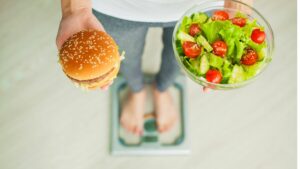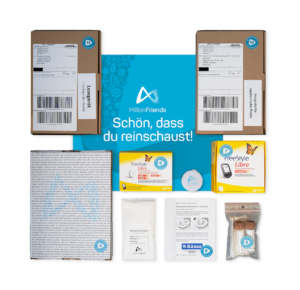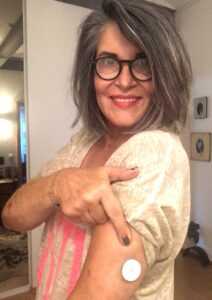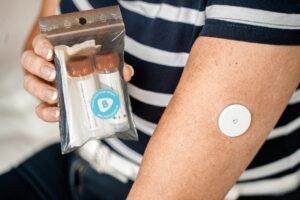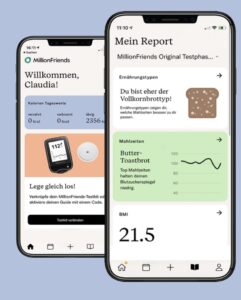Surprised by My Personalized Nutrition Test
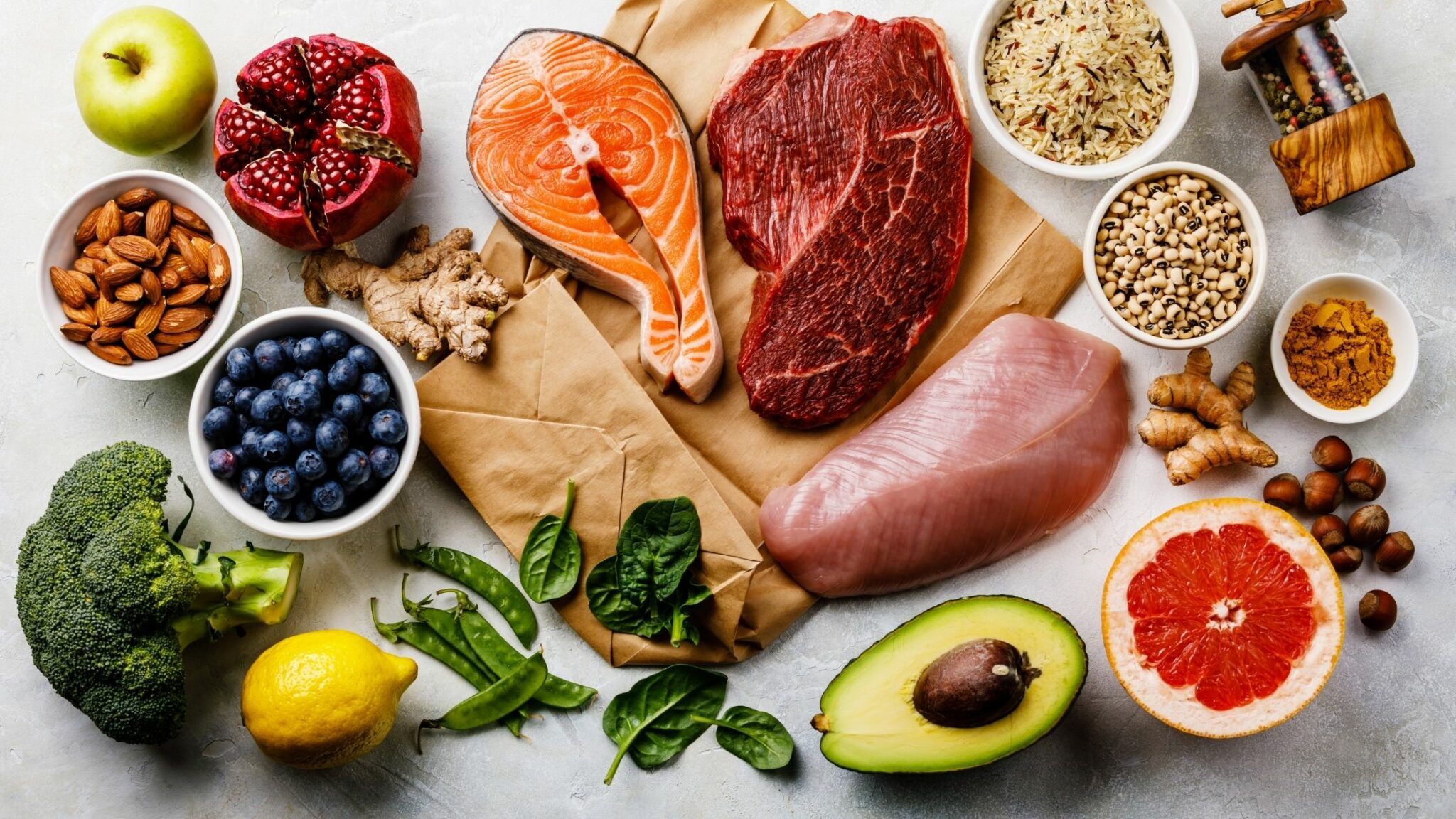
I’ve been asking myself for a long time: Should I rather eat a roll or a slice of wholemeal bread in the morning? Why do I always feel so full after rice in the evening? I wanted to know more about what makes my body tick. That’s why I did a personalized nutrition test.
“Million Friends” – that’s the name of the nutrition test that I completed for 14 days. Our “million friends” are the intestinal bacteria. “The relationship between our body and the very individual mixture of intestinal bacteria plays an important role in how diet influences us,” says Professor Eran Elinav from the Weizmann Institute of Science in Rehovot, who, together with Eran Segal, led an Israeli research team on the subject of how synthetic sugar substitutes change the intestinal flora, increasing the risk of diabetes.
Why is stable blood sugar so important?
It is well known that food causes our blood sugar to rise to a greater or lesser extent, which differs from person to person. As well as known is that an imbalance between the populations of intestinal bacteria increases the risk of metabolic diseases such as obesity and type 2 diabetes. Sharp fluctuations in blood sugar levels not only prevent weight loss, but also increase the health risk.
If the blood sugar level rises sharply after a meal, the excess sugar is stored as fat. If the curve then drops sharply again, hunger attacks are the result and an excessive intake of calories. Such strong fluctuations can have different effects, for example in fatigue and tiredness or a lack of concentration. You are unbalanced and put on weight quickly. A stable blood sugar is therefore desirable. It keeps you full, is healthier, makes you more balanced and more productive. Losing weight is also easier.
It is therefore important to consume meals that keep blood sugar stable. And that’s something very personal. The fact that not everyone reacts in the same way to every food is due to the individual intestinal bacteria. So the microbiome is something like a fingerprint. Therefore it makes sense to know how the body metabolizes different foods.
So I ordered my nutrition test online from “Million Friends” . It contains everything you need: instructions, a scale for the food, a blood sugar chip plus measuring device, a set for the stool sample, a sachet of pure grape sugar for a sugar test meal and a measuring tape. Prepaid return packaging for the measuring device and the stool sample are also included. After a fortnightly blood sugar check and a one-time intestinal bacteria analysis, I will then receive an individualized food plan.
The go for my nutrition test
First, I download the “Million Friends” app onto my smartphone. There I can find lots of anamnesis sheets to fill out. I have to state height, weight, waist and hip measurements. The BMI is already right, the app tells me! But also my eating and sports behavior, how I sleep and whether I have taken antibiotics in the last six months, are asked. The latter is important because my microbiome may have changed as a result.
After 10 minutes every form is filled. Fortunately, there is no paperwork to do, all documentation for the nutrition testing takes place on the app, and the food diary is also kept online. For the next step, I’ll get my husband to help. The glucose sensor must be pressed straight into the back of the upper arm. Difficult to do it by yourself! When he pressed ton the top of the capsule, a round white chip shoots out and gets stuck in my upper arm with a thin needle at its end. It’s over before I even know it. I don’t feel anything from the mini needle either.
I found out that the same sensor I use for my nutrition test is also used by diabetics for blood sugar tracking after people asked me over the next two weeks whether I was diabetic.I then also use the corresponding “Libre Link” app to read in my blood sugar levels and not via the enclosed reader. It seems easier to me – even when I’m on the go: Open the app and hold the smartphone to the chip on my upper arm to take a measurement. On the display, I can not only read my current blood sugar value, but also the curve, i.e. the course. The chip hardly affects me at all – neither in the shower nor during exercise. Only when putting on and taking off do I sometimes get stuck with an item of clothing. But it doesn’t matter, the sensor sits firmly on the skin.
Eat according to a nutrition plan
I can choose from around 70 test meals. I choose only 13 of these meals because I wouldn’t be able to manage more than one per day as a working person during my test phase anyway. I’m pretty aware of that. Anyway I have a clear focus: I want to find out which of my favorite foods are the ones to which my metabolism reacts positively or negatively and at what time of day. The test meals of my choice include, for example, a toast-butter-white cheese-challenge, with which I can check whether I can tolerate fat plus carbohydrates better than protein plus carbohydrates. Whether as a snack the apple or the banana go better with my metabolism.
In my online food diary for the nutrition test, I write down everything I have eaten, how much and when. When I did sports and how I slept. Timing is often a bit difficult because I shouldn’t exercise for about two hours either before or after eating. It could affect the outcome. There should also be two hours between meals. A change for me because I’m not used to snacking and usually only eat twice a day.
And the fact that a meal can only last 20 minutes contradicts everything I have learned so far about nutrition – eat slowly, chew well. If I take too long for a meal, it cannot be counted. Sometimes I also find it difficult to weigh the food. Especially when I’m on the go. How much does the banana weigh again? The food table in the app gives me rough clues with weight and number of calories. Otherwise, I guess the weight. It is easier if you eat ready-made meals, because you can scan the data directly with the barcode via the app. But I don’t like them. Blood sugar is measured after every meal. This is the only way the experts in the nutrition test company can later evaluate the connection between blood sugar and food.
I learn more about myself every day
When tracking my meals, I am unpleasantly surprised how many calories I often ingest without noticing. The Sunday brunch, for example. With cappuccino, fresh orange juice, bread rolls, butter, cheese and yoghurt with raw fruits, I get 950 kcal, almost half of my daily requirement. I am also surprised to see how my body reacts to certain side dishes. At the first test meal with cooked rice in the evening, I am slacker than usual the next morning, because the rice obviously led to hypoglycaemia during the night. The morning yoga tends to exert me more than it gives me energy for the day. My metabolism behaves differently with the cooked noodles as an evening meal. My blood sugar stays constant and I wake up rested.
The 14 days of my surveyed nutrition are over and I am sending the unused measuring device back to “Million Friends”. I activate the recordings of the “Diabetes” app for them to evaluate. The stool sample must have been in the laboratory a long time ago, I sent it in the prepared tubes days beforehand. Now I am waiting for my nutrition profile. It takes about six weeks, then I receive an email that “my report” is available on the app.
Tops and flops
The results of my nutrition test confirm some of my own observations: I’m more of the no-coffee type in the morning (I do it right, drink a cup of tea in the morning!) and I’m better off to eat whole-grain bread than white bread for breakfast. The protein/fat challenge results that I need a combination of both. Obviously I got it wrong til now after I put a lot of emphasis on plenty of protein and little fat. So away with the low-fat yoghurt, bring on the good Greek one. Fatty foods in particular support my metabolism in processing the carbohydrates in the best possible way. When it comes to side dishes, I should focus on boiled rice and potatoes at lunchtime and on pasta in the evening. As an Italian by choice, that suits me very well.
In addition, in my meal report I can also find the list of my tops and flops from all meals that I consumed and listed during the test phase. Interesting! Pretzel rolls with butter and tiramisu are among the winners, while cappuccino and banana tended to flop. I can only confirm that, because while bananas are generally considered very filling, they always have the opposite effect for me. That doesn’t mean that I can whistle in tons of tiramisu and my blood sugar stays stable without getting the bill on the scales. One should still keep an eye on the calories. In order to get an overview of how many calories I consume in foods that serve me, I still use the app.

CultureAndCream Author from Munich
To travel during my profession as a beauty journalist was never enough for my. Also my six month on a world trip didn’t do it. It always attracts me to other cities, foreign countries, on roadtrips and places I don’t know yet. But I am not only interested in “culture” and “cream”, I am also fascinated by people who have stories to tell . Such unique experiences I want to share with you.
